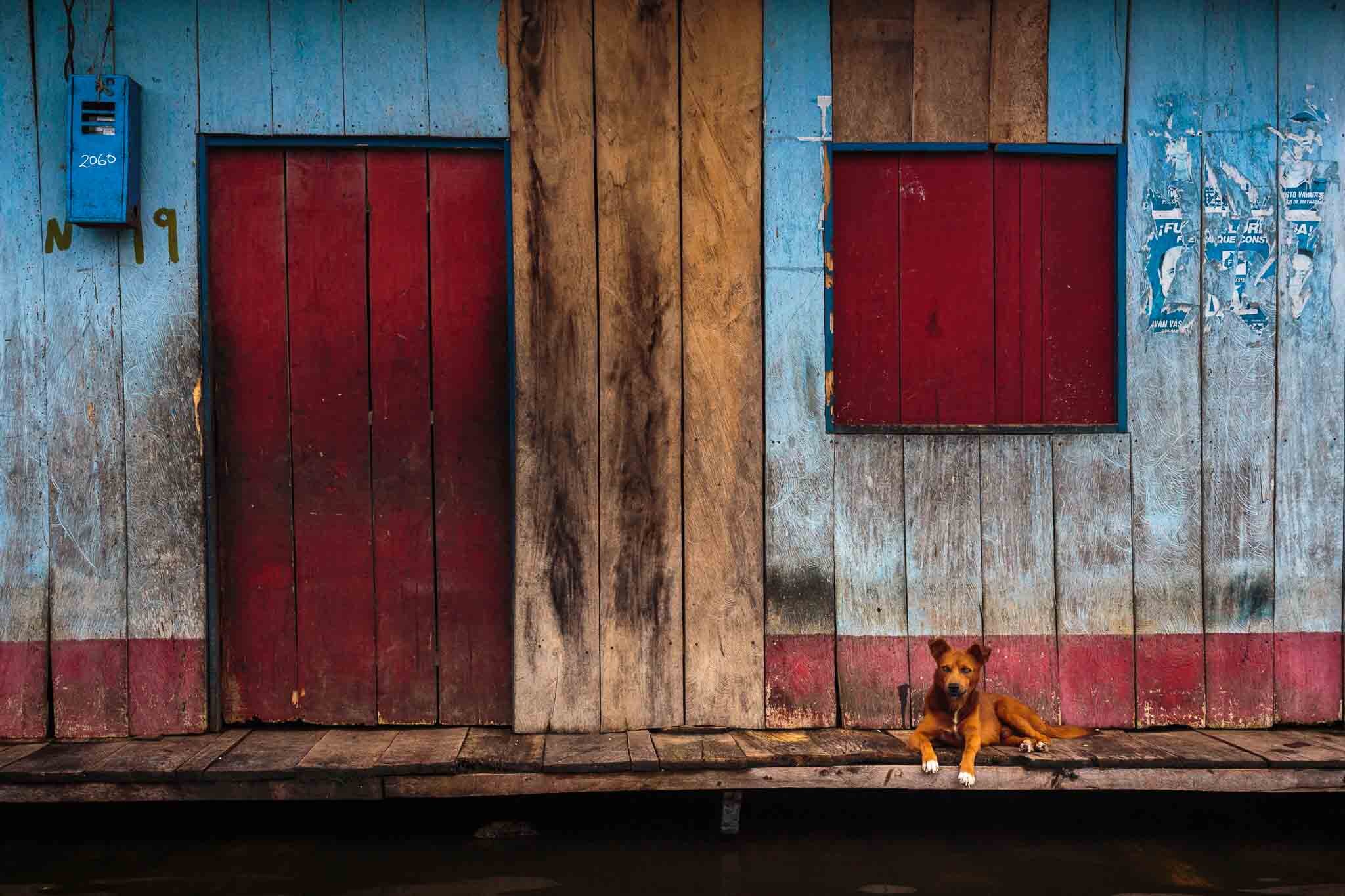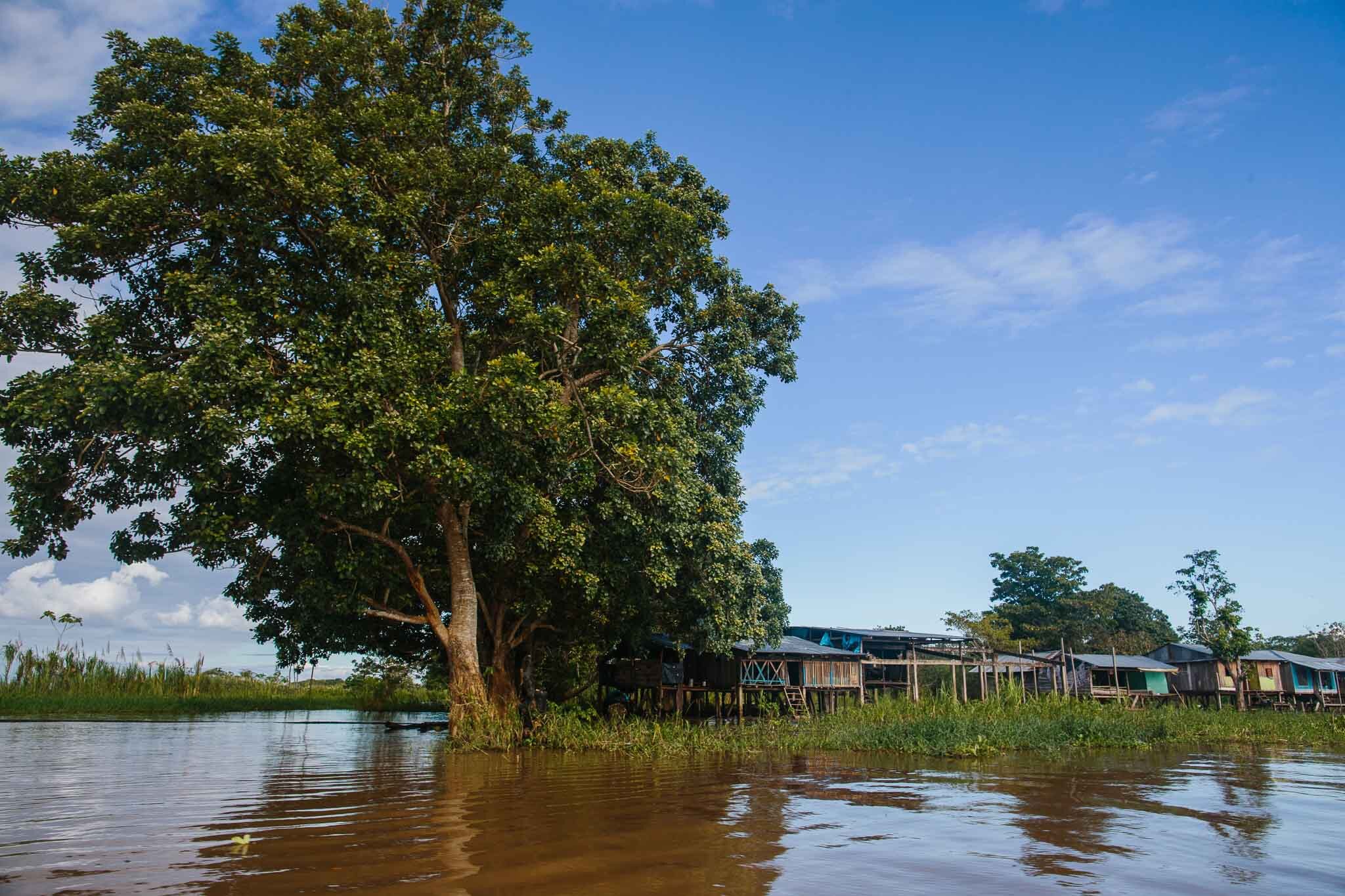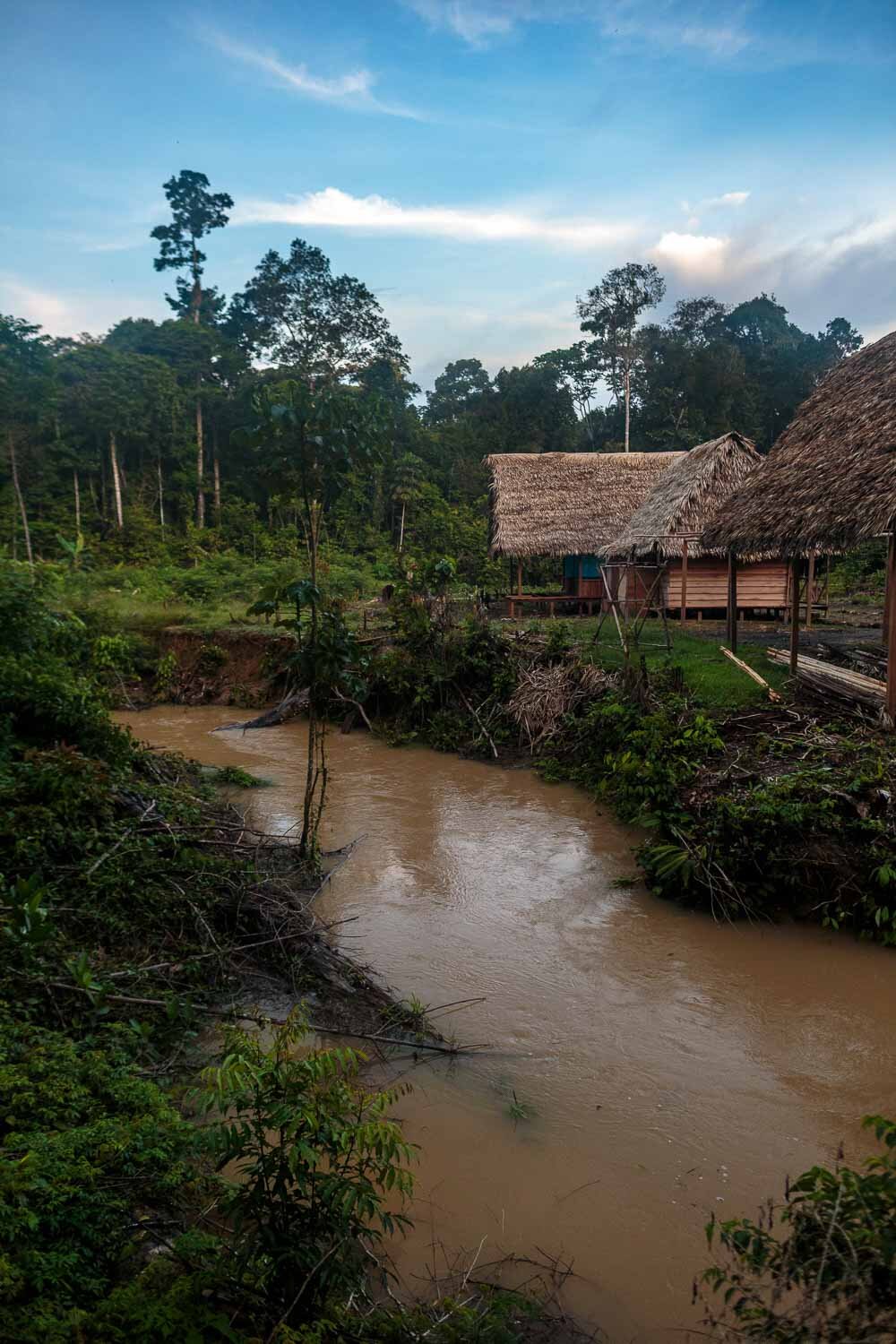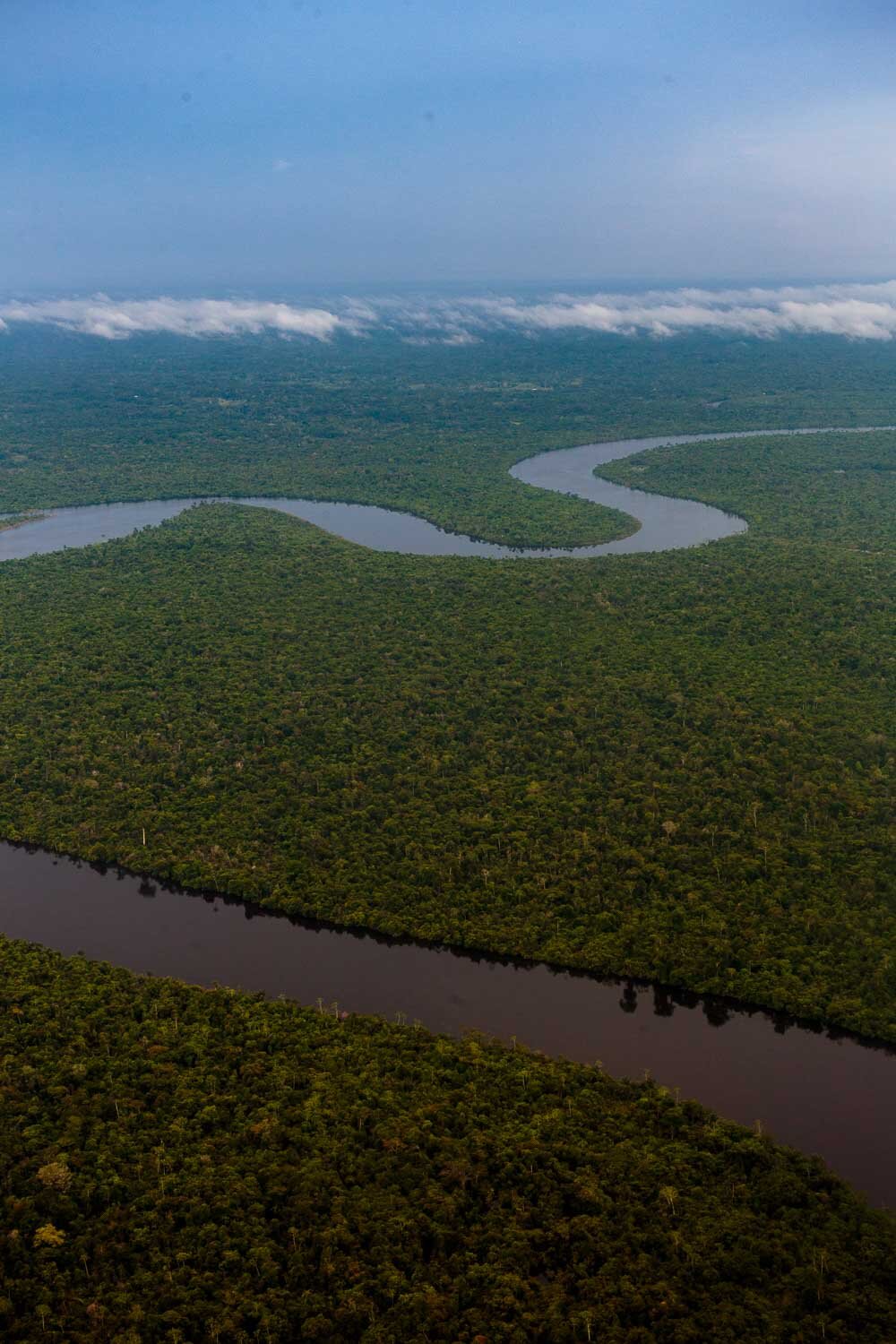This is the first part of a three part introduction to the plant medicine traditions of the Shipibo, working with Ayahuasca, Noya Rao, and other master plants, and apprenticing in the study of Curanderismo. They touch on some of the themes that are explored in further depth in my upcoming book: Water and Light
Find part two here, and part three here.
I remember as a small kid thinking that the Amazon Rainforest was probably the most terrifying place on earth. The thought of the dark jungle, thick with vines, heavy with moisture, and brimming with snakes set my nerves on edge. Even the mere thought of snakes has always caused the skin and hair on my arms and the back of my neck to stand at attention like nervous army recruits. Alongside the uncomfortable feelings there was also a subtle quality of mysteriousness, as if it was curiosity who was actually hiding behind the veil of my fear.
I had no concept then of what life in the Amazon was like, not knowing that it was caught in the crucible of an encroaching modern world and the ancient traditions and ways of life that still held on. I didn’t picture children swimming and laughing in crystal waters while parents sat in the shade beneath palm thatched huts, chatting and stretching out their arms in hopes of catching a faint cell signal.
I didn’t picture bustling port cities with floating neighbourhoods, awash with filth and waste, nor kilometre wide rivers banded with the wakes of passing boats and cargo ships. Villages thumping with the rumble of speakers and growling with the grumble of generators were as far from my imaginings as the idea that tribal elders were struggling to pass on their cultures to the youthful generations being lured away from their ancestry by modern technology and the need for money to support their families. Traditional ways of life were becoming harder to sustain, but my fears didn’t leave room to imagine such things.
In childhood my fears and ignorance painted a picture in my mind coloured with the tones of the wilderness - complex, dangerous and untamed. I imagined the people there as natural, clever, and wary; tribal in the crude, whitewashed western perception of what indigenous realities look like. I didn’t imagine them as the straightforward, genuine, versatile and resourceful people they were, living at relative ease amongst the dangers of the jungle. Those who still live with the jungle don’t live in fear of the myriad perils and risks surrounding them, for they know it better than most people know themselves. They are a part of their environment, and that environment is a part of them.
Back then I would never have guessed at the knowledge held by some of those jungle people. The knowledge of how to heal or to curse with plants of power. The knowledge of the spirit world, and the methods for interplay between these separate yet inseparable dimensions.
For the imaginative freedom of a child’s mind, the culture of western countries can be rather bland and diminishing, colourless and stale like the concrete that sets the stage. There is very little magic and mystery left to explore. Those things are found in games and stories, fantasy and science fiction, so it is in those directions one is led to satisfy their craving for magic and inspiration. We are taught to fear normal things, like drugs, strangers, angry dogs - hey, maybe even poisonous snakes. But we have no reason to worry about such fantastical ideas as sorcery and shapeshifting, trickster spirits and demons. Those things - in the western mind - exist only in stories.
Just as we are taught to fear normal things we are taught to believe in rational things; those that fit into convention and consensus. Things like the importance of getting a good job, a house and a car, the freedoms of democracy and a healthy free market; those are things to believe in. Only in my furthest daydreams could I have imagined a world of beliefs such as those of the Shipibo tribe in the upper Ucayali region of the Peruvian Amazon. My childhood mind would have overflowed with the magic of such possibilities like the rush of a dam bursting. In a paradigm where one can learn from the spirits of plants, communicate with Gods, angels, and aliens, and be given the power to heal others, there would not have been enough concrete logic in the rational western mind to hold back the pressure of this deluge of mystery.
Like many nature based societies, the beliefs and traditions of the Shipibo are formed from many generations of intimate communion with the natural world. Nature based societies have a different experience of their environments because they are not conceptually separated from their surroundings as many of us in the west are, rather they are interwoven in a complex and delicate balance. They are an intrinsic part of their environment, and so it is from nature itself that their traditions and knowledge emerge.
One of the fundamental means of gaining knowledge within the Shipibo tradition is the practice of building relationships with plants. Shipibo culture is shaped by plants. They say that their language was given to them by plants, and their encyclopedic knowledge of plant medicines and remedies are also the result of their evolving plant relationships.
The idea of ‘listening’ to a plant may come across to many as a rather foreign one. Yet when looking through the lens of an indigenous, nature based society it is easier to conceptualize. One can look at nature based societies and see how culture and tradition become so deeply ingrained. As a child in the western world, we have many influences. Our parents initially, then our friends and community, and then as we get older we are also subject to the influence of our society, religions, ideologies, popular culture, entertainment and media. These can all become significant influences in our lives, even while carrying radically different value and belief systems. When the major influences in your life contradict eachother, it can be a little confusing. The nature based society is in contrast to this range of influence as the entirety of their influences are in balance with their communal way of life and their surroundings, and so knowledge and traditions grow within the culture as they are consistently reinforced through an individual and collective experience. In this sense, there are less voices competing for attention and one is not confused in their beliefs due to having multiple and varied messages.
Indigenous languages, due to their proximity of engagement with the natural world, often have the effect of strengthening ties to the earth. Words and concepts are structured around concepts mirrored in the earthly experience, and are symbolic of a shared experience. David Abram delves into this intimate relationship beautifully in his book; ‘The Spell of the Sensuous’. As Wade Davis says in his essay ‘Season of the Brown Hyena’: “A language is not merely a set of grammatical rules or a vocabulary. It is a flash of the human spirit, the vehicle by which the soul of each particular culture comes into the material world. Every language is an old-growth forest of the mind, a watershed of thought, an ecosystem of spiritual possibilities”. The Shipibo language ties the people to eachother, their traditions, and the plants, animals, and elements of their world. For the Shipibo, plant communication is an essential component of their system of healing, and of their wider culture in general.
When I was first introduced to the Shipibo medicine traditions through the Ayahuasca Foundation in 2015 after reaching an impasse with my mental health struggles, I came with many different voices in my head. None of them were plants, and very few were even my own. Like many who come of age in a westernized society my mind was pulled in many different directions, and I was challenged in finding authenticity among the many competing and contradicting values and beliefs of my own culture. In order to learn to listen to the plants, all those competing voices needed to be tuned out.
As I delved into the Shipibo tradition and began tuning out the voices of the outside world, those voices began to be replaced by those that felt more authentic. Slowly I began to tune in to the voice of Noya Rao, the plant with whom I had begun to build a relationship. Through the medicine of that relationship, she led me to recognize my own voice; the one that spoke from my heart rather than amongst the cacophony of scattered questions, doubts, thoughts and opinions of the mind. She was at once leading me closer to the earth and to myself.
Immersing deeper into the traditions of the Shipibo led me to realize what powerful medicine it was for the western soul. The cracks of disconnection that I had seen running rampant in my own culture crystallized into a clearer picture of how and why we have become misled, and the opportunities that lie therein. Noya Rao revitalized that sense of childlike wonder, and lit the flame of intrigue and mystery that had been extinguished within me so long ago. Reconnecting to the earth through the practice of listening to plants rejuvenated a part of me that I didn’t realize I had lost, and reinvigorated the flow of inspiration, gratitude, and hope that we all need to flourish.
Learning to listen to the wisdom of plants is not always an easy path, especially when doing so within the Shipibo paradigm with the intention of learning to carry their medicine traditions. ‘No es fascil ser un medico’, says Maestro Don Enrique Lopez. Telling his students that ‘It is not easy to be a doctor’ is one of Maestro’s favourite claims. But in life is it not through suffering that we realize new depths of joy, and through challenge that we uncover deeper layers of our own strength and fortitude?
There is a saying I often use with regards to Shipibo medicine that says ‘the only way out is through’. When it comes to our fears in life - like those fears I had as a child hearing of the wild Amazon rainforest - pushing through can lead us to places and things more beautiful than we could have imagined. Fear is the gateway that leads to deeper levels of love and fulfillment. If I’ve heard anything correctly while learning to listen to plants, they might just be suggesting that our active engagement with the mysteries of life - many of which lie behind our fears - is where we reconnect with the beauty of existence, the creative flow of life, and the gratitude that comes of recognizing more truly how unique our human experience is.
To hear more about Noya Rao and the Shipibo practice of dieta, read part two here:











